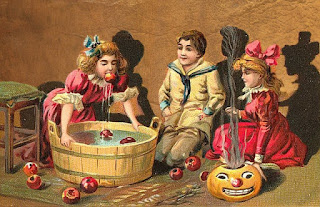As we look at wedding traditions, I
thought it would be fun to look at mythology for a change, and what better
place to start than the iconic, Hera, goddess of marriage in Greek mythology.
She is one of the twelve Olympians and within that mythos, she is the sister
and wife of the god of the sky, Zeus. In art, she is often depicted with the
animals she considered sacred, and is regularly portrayed wearing a
high cylindrical crown and seated on a throne.
Hera, goddess of marriage
Within Greek mythology, Hera is the
daughter of the Titans Cronus and Rhea, and she rules over Mount Olympus as
queen of the gods. What exactly does the queen of the gods do? That role is
multifaceted. It not only includes being the goddess of marriage, but also includes
goddess of women, family, and childbirth. In these roles, she is considered the
patroness and protectress of married women. It was believed
that she presided over ancient Greek weddings and blessed marital unions.
How Hera and Zeus met
How Hera and Zeus met is a popular
story within Greek mythology, but I want to offer the short version to shine a
light on the irony of Hera’s role as goddess of marriage. If you know anything
of the story of Zeus, you know his history as a lustful god who seemed
infatuated with just about every good-looking woman he saw. In Hera’s case, he
spotted her as she walked in the region of Hesperides, but decided not to
approach her directly. Instead he changed into a wounded cuckoo bird near death.
Hera took the bird home to restore it to health. Once in her home, she held
the bird to her breast to warm it, and Zeus revealed his true identity and took
advantage of her. I’m just saying, that if you fall in love with someone who
pretends to be one thing and proves to be something else in a negative way, and he takes advantage of
you, it is not a good idea to continue in that relationship. But, Zeus was the
chief deity of the pantheon. I guess one might be enamored by titles like the
god of the sky, protector of cities, home, strangers, guests, etc. After all,
when you stand back and look at it, all his roles complemented Hera’s.
Hera’s wedding
Hera and Zeus enjoyed a lavish wedding with
the ceremony performed in the Garden of Hesperides, the same place Zeus first
saw Hera. Sacrifices were made in the couples’ honor, and the other gods sang hymns
of praise for the newlyweds. Each god brough a gift. One of the most notable
were the gifts given by Gaea, the goddess of the Earth. She gave the couple a quince
(the Greek symbol of love), and she created a tree bearing golden apples for
Hera which were protected by a great serpent called Ladon.
Hera’s honeymoon
Hera and Zeus’ honeymoon lasted for a three
hundred years. The mythos says their honeymoon destination was the Greek island of
Samos. Greeks often used this myth to talk about the Earth’s fertility, or the lasting
power of marital love. But most people who know anything about the myth of Zeus
and Hara know that he did not honor monogamous marriage.
Hera the vengeful wife
While the marriage saw some happy
times, Hera didn’t forget how Zeus had taken advantage of her and she watched
for a time when she could get even. She saw her opportunity when Zeus mistreated
his fellow Olympians. When she saw they were fed up with her husband, she
talked them into revolting, but the revolt failed. As punishment, Zeus tied
Hera’s wrists with golden shackles with anvils shackled to her feet and then
hung her from the heavens. She cried out in pain all night but none of the
other gods dared to lift a finger to help her because they feared Zeus. The
following day, Zeus showed her mercy and offered to let her go on one condition.
She had to swear never to plot or rebel against him again. She kept that
promise, but turned her wrath towards Zeus' mistresses and their illegitimate
children.
Hera a jealous wife
Zeus’ numerous affairs and resulting illegitimate
children led to a collection of stories which define her as a vengeful, jealous
wife. Probably one of the most popular of these stories surrounds the birth of
Zeus’ illegitimate son, Heracules. (Did you notice the first part of his
name is Hera? This is the Greek spelling. The Romans spelled it Hercules.)
When Heracules’ mortal mother, Alcmene,
went into labor, Zeus announced that the next child born in his lineage would
become a great king. Hera stepped into her role as the goddess of childbirth
and prolonged Alcmene’s labor to delay Heracules’ birth, and with the help of
her daughter, Eileithyia, she caused a more distant descendant to prematurely
give birth to a son, and he became the ruler of
Mycenae.
After Hercules was born, Hera sent two snakes to kill him in his crib,
but even as an infant, Hercules had unusual strength and he strangled the
snakes. Her shenanigans didn’t end there. As a young adult she cast a spell on
Heracules that led him to kill his wife and children.
With this story,
I ask, why was Hera considered the god of marriage or the god of childbirth?
Image credits: Steven Zucker, Mary Harrsch, pxfuel, picryl













